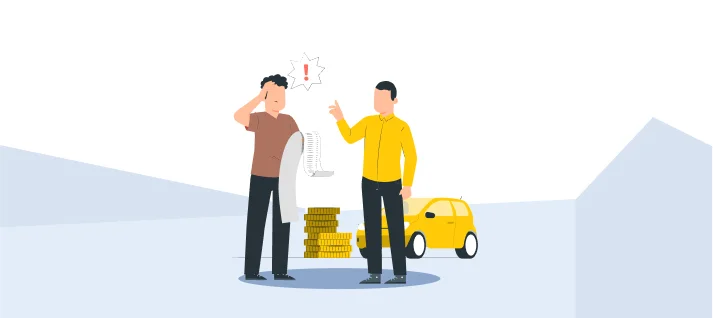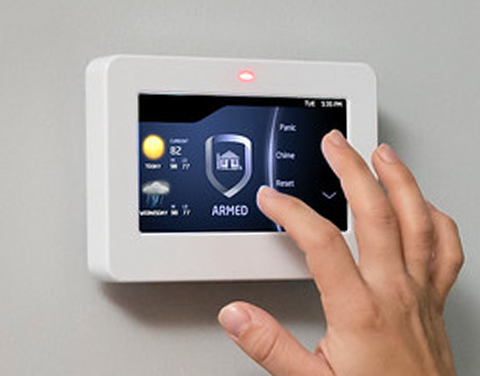Introduction to Customer Engagement & Re-Engagement
What Do You Mean by Customer Engagement
Customer re-engagement focuses on reconnecting with customers who have previously interacted with a brand but have since become inactive or disengaged.
This could be due to a variety of reasons, such as dissatisfaction with a product, a perceived lack of value, or simply forgetting about the brand amidst the noise of competitors.
One of the most effective ways to keep your customer re-engagement high is to ensure your sales team is on track and using a well-structured sales playbook. This tool provides a clear framework for your team to follow, ensuring consistent messaging and streamlined approaches when engaging with customers. A strong playbook can help your team navigate various customer scenarios, driving both engagement and re-engagement strategies.
Re-engaging customers can be more cost-effective than acquiring new ones, with a potential 25% increase in profitability and therefore it’s important to pay adequate attention to your past customers (Source: ABC Analytics).
Read our blog post on How to write a professional email offering services
What Do You Mean by Customer Re-Engagement
Customer re-engagement focuses on reconnecting with customers who have previously interacted with a brand but have since become inactive or disengaged.
This could be due to a variety of reasons, such as dissatisfaction with a product, a perceived lack of value, or simply forgetting about the brand amidst the noise of competitors.
Re-engaging customers can be more cost-effective than acquiring new ones, with a potential 25% increase in profitability (Source: ABC Analytics).
Read our blog post on Email Warmer
Why Customer Engagement and Re-Engagement is Important for Business Growth
Importance of Customer Engagement
Customer engagement and re-engagement are critical for business growth for several compelling reasons:
1) Increase Sales and Revenue
- Engaged customers are more likely to make repeat purchases.
- Re-engaging past customers can reignite their interest in your products or services, leading to renewed and ongoing revenue streams.
2) Improves Customer Lifetime Value (CLV)
- By continuously engaging and re-engaging customers, businesses can significantly increase the lifetime value of each customer.
- This means more revenue over the long term from a single customer, reducing the need and cost to acquire new ones.
3) Reduced Churn Rate
- Effective engagement and re-engagement strategies help in retaining customers.
- By keeping customers interested and connected with the brand, businesses can reduce churn rates, maintaining a stable customer base.
4) Improves Company’s Feedback Loop
- Engaged customers are more likely to provide feedback.
- This valuable insight can help businesses to innovate and improve their products, services and sales engagement strategies, leading to better customer satisfaction and further growth.
5) Generate Word-of-Mouth Marketing
- Happy and engaged customers are the best advocates for a brand.
- They are more likely to recommend your products or services to others, providing free but highly credible marketing.
6) Competitive Advantage
- In a crowded market, the ability to effectively engage and re-engage customers through sales engagement platforms can set a business apart from its competitors.
- It creates a loyal customer base that is less likely to switch to a competitor.
7) Efficiency in Marketing Spend
- Engaging and re-engaging existing customers is often more cost-effective than acquiring new ones.
- It allows businesses to allocate their marketing budgets more efficiently, helping sales teams to focus on deepening existing relationships rather than constantly seeking new customers.
Read our blog post on KIndly Regards
Importance of Customer Re-Engagement
Psychology Behind Customer’s Engagement and Re-Engagement
The psychology behind customer engagement and re-engagement is rooted in understanding how emotional and cognitive factors influence consumer behavior towards a brand.
Let’s delve into the core psychological triggers:
Need for Belonging
- What: Customers engage with brands that resonate with their identity or values, fulfilling their need for social belonging.
- Why: Being part of a community provides emotional support and validation, enhancing customer loyalty.
- How: Brands can foster this sense of belonging by creating exclusive membership programs or engaging online communities.
- For instance, a study by the Harvard Business Review highlighted that customers who are part of a brand’s community spend up to 20% more than those who aren’t.
Principle of Reciprocity
- What: This principle suggests that people feel compelled to give back when they receive something of value.
- Why: It creates a psychological debt, making customers more likely to engage with the brand in the future.
- How: Implementing loyalty programs that reward customers for their purchases or interactions can activate this principle.
- Data from the Loyalty Report 2021 indicates that members of loyalty programs are 47% more likely to increase their spending with the brand.
Trust and Consistency
- What: Trust is fundamental to any relationship, including the customer-brand relationship. Consistency in brand messaging and experience reinforces this trust.
- Why: Trust leads to emotional safety and reliability, key factors in customer retention.
- How: Maintaining a consistent brand voice across all channels and delivering on promises are crucial.
- According to Edelman’s Trust Barometer, 81% of consumers say that trusting a brand to do what is right is a deciding factor in their purchase decision.
Fear of Missing Out (FOMO)
- What: FOMO is a powerful motivator that drives customers to engage or re-engage to avoid missing out on valuable experiences or offers.
- Why: It taps into loss aversion, where the pain of losing is more significant than the pleasure of gaining.
- How: Time-limited offers or exclusive promotions can effectively leverage FOMO.
- A campaign by a leading e-commerce platform using time-limited discount codes saw a 332% increase in engagement rates.
Read our blog post on How to write a follow up email ?
How to Engage Customers to Increase Sales
1. Make Interactive Content
Make Interactive Content to Engage Customers
- Interactive content includes quizzes, polls, surveys, interactive videos, and infographics that engage users more deeply than static content.
- This type of content requires active participation, creating a more engaging and memorable experience for the user.
- Effectiveness: According to the Content Marketing Institute, interactive content can double the number of conversions compared to passive content.
- It works by increasing user engagement, which in turn boosts brand awareness and keeps your products or services top of mind.
2. Personalized Recommendations
- Personalized recommendations leverage data analytics to suggest products or services that meet individual customer needs or preferences.
- This can be based on their browsing behavior, purchase history, or even responses to quizzes and surveys.
- Effectiveness: Amazon’s recommendation engine drives 35% of its sales, showcasing the power of personalized recommendations.
- This strategy works by making shopping easier and more tailored for the customer, increasing the likelihood of purchase.
3. Create Loyalty Programs
Create Loyalty Programs to Increase Customer Engagement
- Loyalty programs reward customers for repeat purchases or engagement with the brand. Rewards can range from discounts and special offers to early access to new products or exclusive content.
- Effectiveness: A report by the Harvard Business Review found that increasing customer retention rates by 5% increases profits by 25% to 95%.
- Loyalty programs directly contribute to this by incentivizing repeat purchases, which not only boosts sales but also enhances customer lifetime value.
- Furthermore, customers in loyalty programs are more likely to refer others, amplifying the impact on sales through word-of-mouth marketing.
4. Educate Your Customer
- Educational content can include tutorials, webinars, blog posts, or e-books that provide valuable information related to your products or services.
- Effectiveness: According to a study by Demand Metric, 78% of consumers believe that organizations providing custom content are interested in building good relationships with them.
- This approach not only increases the likelihood of an initial purchase but also fosters loyalty, leading to repeat business. Nielsen’s Global Trust in Advertising report shows that 67% of consumers are more likely to buy from a brand after consuming its educational content, highlighting the direct link between education and sales increases.
5. Have Social Media Engagement with Customers
- Engaging with customers on social media involves actively responding to comments, sharing user-generated content, and posting interactive content that encourages participation.
- Effectiveness: Brands that engage directly with their customers on social media enjoy higher loyalty rates. A report by Sprout Social reveals that when consumers feel connected to brands, 57% are more likely to increase their spending with that brand.
- Social media engagement works by making customers feel seen and heard, directly influencing their buying decisions and fostering a personal connection with the brand.
6. Email Marketing
- Email marketing involves sending targeted and personalized messages to your customers. This can include newsletters, promotional offers, and updates about new products or services.
- Effectiveness: Email marketing remains one of the most effective sales tools, with an average ROI of $42 for every $1 spent.
- This effectiveness stems from its direct approach and the ability to segment and personalize communications, making it easier to deliver the right message to the right customer at the right time.
7. Build Your Community
Build Your Community to Increase Customer Engagement
- Building a community involves creating spaces (online forums, social media groups, in-person meetups) where your customers can connect with each other and your brand.
- Effectiveness: According to a study by the Harvard Business Review, customers who are part of a brand’s community spend up to 19% more than customers who aren’t.
- This increase in spending is due to the emotional connection and sense of belonging that community membership fosters, which translates into higher brand loyalty and increased sales.
8. Feedback Loops
- Feedback loops involve actively soliciting, listening to, and acting on customer feedback. This can be done through surveys, social media, or direct customer outreach.
- Effectiveness: Implementing customer feedback can significantly enhance product market fit and customer satisfaction, which directly contributes to sales growth.
- A study by Apptentive shows that listening to customer feedback and acting on it can increase retention rates by as much as 15%.
9. Provide Self-Service Resources
- Self-service resources, such as FAQs, knowledge bases, and instructional videos, empower customers to find answers to their questions without waiting for a response from customer service.
- Effectiveness: According to American Express, 60% of US consumers prefer an automated self-service, such as a website or mobile app, for simple customer service tasks.
Utilize Sales Engagement Platforms to Increase Sales
What is a Sales Engagement Platform?
A Sales Engagement Platform is a suite of integrated software tools that enables sales teams to more efficiently engage with prospects and customers across multiple channels.
These platforms typically offer features such as email automation, call logging, meeting scheduling, content sharing, and analytics.
By consolidating various tools and data into one platform, SEPs provide a dedicated sales engagement software for unified view of customer interactions, making it easier for a sales rep to manage their pipelines and personalize their outreach.
How to utilize Sales Engagement Platforms
1. Integrate with Your Sales Engagement Plan: Begin by integrating the sales engagement platform into your existing sales engagement plan. This allows for a seamless transition and ensures that all team members are aligned with the platform’s capabilities and the sales strategy.
2. Enhance Sales Enablement: Utilize the platform to provide your sales teams with the necessary resources, content, and information needed to engage effectively with prospects. This could include product information, competitor analysis, and case studies.
3. Streamline the Sales Process: Use the platform’s automation features to streamline repetitive tasks within your sales processes, such as scheduling follow-up emails or updating lead statuses. This increases efficiency and allows sales representatives to spend more time on high-value activities.
4. Collaboration Among Sales Teams: Foster collaboration by using the platform’s features that allow sales teams to share insights, strategies, and updates easily. This ensures everyone is on the same page and can learn from each other’s successes and challenges.
5. Training and Onboarding: Leverage the platform for training new sales reps and managers. Many platforms offer features like playbooks and training modules that can help onboard new team members faster.
6. Monitor the Sales Cycle: Utilize analytics and reporting tools within the platform to gain insights into the sales cycle. This data can help sales managers make informed decisions, identify bottlenecks, and improve the overall sales strategy.
7. Personalize the Customer Journey: Use the platform to map out and understand the customer journey, then personalize interactions based on this information. Tailored messaging can significantly increase engagement rates and conversion chances.
Sales Engagement Tools to Engage Customers
CRM Systems
- Function: Centralizes customer information, providing a comprehensive view of all customer interactions.
- Benefits: Enables personalized communication and helps sales reps understand the customer’s history and preferences, leading to more tailored and effective sales pitches.
Email Automation Platforms
- Function: Automates the sending of personalized emails based on specific triggers or actions taken by the customer.
- Benefits: Ensures timely follow-ups and keeps the conversation going with minimal manual effort, increasing the chances of conversion.
Social Media Management Tools
- Function: Allows sales and marketing teams to post content, engage with followers, and monitor social media interactions from a single platform.
- Benefits: Enhances brand presence on social media and enables direct engagement with prospects and customers, fostering relationships and brand loyalty.
Sales Enablement Platforms
- Function: Provides sales teams with the content, training, and coaching tools needed to engage effectively with customers.
- Benefits: Ensures that sales reps have access to the right information and resources at the right time, improving the quality of customer interactions and the overall sales process.
Analytics and Reporting Tools
- Function: Offers detailed insights into customer behaviors, sales performance, and engagement metrics.
- Benefits: Helps sales managers and reps understand what strategies are working, where improvements are needed, and how to optimize the sales cycle for better results.
Chatbots and Conversational AI
- Function: Provides automated responses to customer inquiries on websites or social media platforms, like this whatsapp chatbot maker, for instance, and is available 24/7.
- Benefits: Enhances customer engagement by offering immediate assistance, answering common questions, and guiding users through the sales funnel.
Best Platforms to Implement Your Sales Engagement Strategy
1. Salesforce Sales Cloud: Offers a comprehensive suite of CRM and SEP features, including lead management, email automation, and advanced analytics.
2. Outreach: A popular platform known for its powerful automation features, prospecting tools, and integration capabilities.
3. HubSpot Sales Hub: Provides a wide range of tools for email tracking, meeting scheduling, and deal management, all within HubSpot’s CRM ecosystem. Work with a hubspot consultant to make the most out of this service and boost your sales.
4. LinkedIn Sales Navigator: Tailored for B2B sales, it offers advanced lead and company search capabilities, personalized outreach, and insights into LinkedIn activities.
5. Yesware: Ideal for email-centric sales strategies, offering email tracking, templates, and analytics to optimize your email outreach.
6. Zoho CRM: A budget-friendly option that includes sales automation, multi-channel communication, and performance analytics.
How to Re-Engage Your Inactive Customers
1. Target Inactive Customers Through Re-Engagement Emails
- Sending personalized re-engagement emails to customers who haven’t interacted with your brand for a while is a direct way to remind them of your presence and value.
- This approach can include personalized messages, updates on new products or services, or even a simple “we miss you” note.
- Effectiveness: Data from Mailchimp indicates that re-engagement campaigns can lead to a 10-12% open rate, which is significant considering these customers were inactive.
2. Provide Win-Back Offers
- Offering discounts, exclusive access, or special deals can motivate inactive customers to make a purchase. These offers are often time-sensitive, adding a sense of urgency.
- Effectiveness: According to a study by Bain & Company, increasing customer retention rates by just 5% increases profits by 25% to 95%.
- Win-back offers directly contribute to this by reactivating customers who might otherwise remain dormant.
3. Use Remarketing Campaigns
- Remarketing campaigns target users who have previously engaged with your website or mobile app but did not make a purchase.
- By displaying targeted ads across various platforms, you remind them of what they’re missing.
- Effectiveness: Google reports that remarketing ads can lead to a 726% lift in site visitation within the first month of launching a campaign.
- This method works because it keeps your brand top-of-mind, leveraging past interactions to drive future engagements.
4. Send Survey for Insights
- Sending surveys to inactive customers helps you understand why they disengaged.
- It can provide critical insights into what aspects of your product or service need improvement.
- Effectiveness: While specific conversion rates from surveys to re-engagement are harder to quantify, the value lies in the qualitative feedback.
- This feedback can inform strategic decisions, leading to product improvements that increase overall customer satisfaction and retention.
5. Update Notifications
- Update notifications inform customers about new features, updates, or improvements to your products or services.
- This can be communicated through emails, app notifications, or social media updates, tailored to catch the eye of the customer and remind them of the evolving value your brand offers.
- Effectiveness: A case study by Localytics found that app update notifications can lead to a 20% increase in app opens.
6. Offer Special Customer Discounts
Offer Special Customer Discounts for Customer Re-engagement
- Similar to win-back offers, special customer discounts are exclusive deals provided to inactive customers.
- These can be more personalized, based on the customer’s previous interactions with the brand, and are often communicated through direct channels like email or SMS.
- Effectiveness: Research shows that personalized discounts can increase transaction rates by up to 50%.
- This strategy works by leveraging the customer’s past interest in your products or services and providing them with a financial incentive to re-engage.
7. Send Personalized Product Alerts
Send Personalized Product Alerts for Customer Re-engagement
- Personalized product alerts involve notifying customers about products or services that match their interests or past behavior.
- This strategy relies on data analytics to segment customers based on their preferences or purchase history, ensuring the alerts are highly relevant.
- Effectiveness: According to a report by Epsilon, personalized emails deliver six times higher transaction rates.
- Personalized product alerts work by making the customer feel understood and valued, directly addressing their unique needs and preferences, which increases the likelihood of re-engagement.
8. Utilize Social Proof
Utilize Social Proof for Customer Re-Engagement
- Social proof involves showcasing customer testimonials, reviews, case studies, or user-generated content to demonstrate the value and popularity of your product or service.
- This can be displayed on your website, social media channels, or in marketing emails. It taps into the psychological tendency of people to follow the actions of others.
- Effectiveness: According to Nielsen, 92% of people trust recommendations from peers over advertising. Social proof works by leveraging this trust.
- When inactive customers see others benefiting from or enjoying your product, they are more likely to reconsider their engagement.
9. Offer VIP Treatment
- VIP treatment can include offering exclusive discounts, early access to new products or services, or personalized customer service to inactive customers.
- This approach makes them feel valued and special, encouraging them to re-engage with your brand.
- Effectiveness: A report by Accenture shows that 91% of consumers are more likely to shop with brands that recognize, remember, and provide relevant offers and recommendations.
- VIP treatment works because it directly addresses the desire for recognition and personalized service, making customers more likely to reactivate their relationship with the brand.
10. Exclusive Event Invitations
- Inviting inactive customers to exclusive events, whether online webinars, workshops, or in-person gatherings, can rekindle their interest in your brand.
- These events offer a unique experience that goes beyond the standard customer-brand interaction, providing value through education, entertainment, or networking opportunities.
- Effectiveness: The exclusivity of the invitation makes customers feel special, while the event itself provides a tangible reason to engage with your brand again.
- This strategy works by creating a memorable experience that re-establishes the brand-customer connection.
Best Sales Re-Engagement Tools
1. Retargeting and Remarketing Platforms
- Function: Allows businesses to target ads to users who have visited their website but did not make a purchase or take a desired action.
- Benefits: Increases the likelihood of converting previous visitors by reminding them of what they viewed or expressing interest in, directly addressing their interests or previous engagement with personalized ads.
- Example: AdRoll
2. Customer Data Platforms (CDPs)
- Function: Integrates customer data from various sources into a single database to create comprehensive customer profiles.
- Benefits: Enables more targeted and personalized re-engagement campaigns by leveraging detailed insights into customer behaviors, preferences, and previous interactions with the brand.
- Example: Segment
3. Push Notification Services
- Function: Sends notifications directly to a user’s device (mobile or desktop) to re-engage them with timely and relevant messages.
- Benefits: Captures attention quickly with minimal intrusion, encouraging users to revisit the app or website with updates, offers, or reminders that are personalized to their interests.
- Example: OneSignal
4. Email Re-engagement Campaign Software
- Function: Specifically designed for creating and managing email campaigns aimed at re-engaging inactive subscribers or past customers.
- Benefits: Helps segment inactive users, tailor messages to reignite interest, and measure the effectiveness of re-engagement efforts, improving overall email marketing ROI.
- Example: Mailchimp
5. Automated Survey Tools
- Function: Automates the creation and distribution of surveys to gather feedback from customers who have disengaged.
- Benefits: Provides insights into why customers may have disengaged and offers an opportunity to address their concerns, improving the product or service and potentially re-engaging dissatisfied customers.
- Example: SurveyMonkey.
Read our blog post on Mastering Sales Objections: A Comprehensive Guide ( Includes 50 Common Sales Objections & How to Respond)









